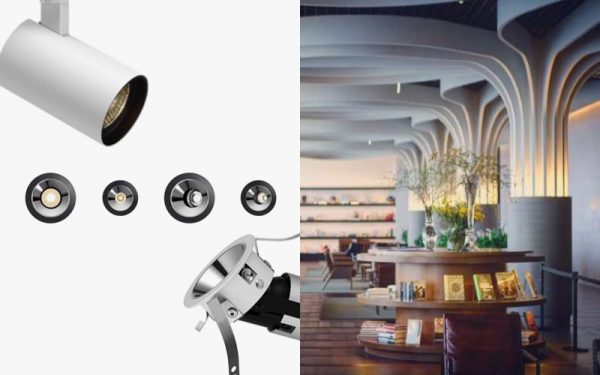Semi-finals

The Spanish 22-time Grand Slam champion went off court for treatment at 3-4 in the second set and although he returned to take that set, his movement continued to be hampered and he struggled on his backhand side and on his serve, which increasingly dropped in speed.
Hanging his head while sitting at the changeovers, Nadal looked lost, calling on the trainer at the end of a third set that he handed to Fritz when he sent a forehand wide. He had a chat with the trainer but no treatment, merely shaking his head before heading over to the baseline.
Nadal was broken eight times in the match, his serve frequently 25mph slower than that of his opponent, but he held it to love to take the fourth set and force a decider that had looked so unlikely at times.
This was a reminder that this is one of his sport’s all-time greats and whose fighting spirit is his trademark.
Nadal had break points at 3-3 in the fifth, one of which was saved by a cruel net cord, before he finally converted the fourth with a delicate forehand drop shot.
But Fritz, who had beaten Nadal earlier this year in the Indian Wells final and won the Eastbourne title just before arriving at the All England Club, responded brilliantly with an immediate break back and hold to leave the Spaniard serving to stay in the match as the clocked ticked past four hours.
He held firm and Fritz quickly held his own serve again with an ace, with Nadal then roaring when he took it into the tie-break, where he quickly went 5-0 ahead.
A drop shot from the Spaniard left Fritz lying on his back, watching Nadal’s winner go past him at the end of a 25-shot rally, before the two-time Wimbledon champion turned a final screw with a forehand that put him into his eighth Wimbledon semi-final.
“It’s been a tough afternoon against a great player,” said Nadal, who has a perfect record of winning all eight of his quarter-finals here. “Credit to Taylor that he has been doing great all season.”
lighting #light1
The Spanish 22-time Grand Slam champion went off court for treatment at 3-4 in the second set and although he returned to take that set, his movement continued to be hampered and he struggled on his backhand side and on his serve, which increasingly dropped in speed.
Hanging his head while sitting at the changeovers, Nadal looked lost, calling on the trainer at the end of a third set that he handed to Fritz when he sent a forehand wide. He had a chat with the trainer but no treatment, merely shaking his head before heading over to the baseline.
Nadal was broken eight times in the match, his serve frequently 25mph slower than that of his opponent, but he held it to love to take the fourth set and force a decider that had looked so unlikely at times.
This was a reminder that this is one of his sport’s all-time greats and whose fighting spirit is his trademark.
Nadal had break points at 3-3 in the fifth, one of which was saved by a cruel net cord, before he finally converted the fourth with a delicate forehand drop shot.
But Fritz, who had beaten Nadal earlier this year in the Indian Wells final and won the Eastbourne title just before arriving at the All England Club, responded brilliantly with an immediate break back and hold to leave the Spaniard serving to stay in the match as the clocked ticked past four hours.
He held firm and Fritz quickly held his own serve again with an ace, with Nadal then roaring when he took it into the tie-break, where he quickly went 5-0 ahead.
A drop shot from the Spaniard left Fritz lying on his back, watching Nadal’s winner go past him at the end of a 25-shot rally, before the two-time Wimbledon champion turned a final screw with a forehand that put him into his eighth Wimbledon semi-final.
“It’s been a tough afternoon against a great player,” said Nadal, who has a perfect record of winning all eight of his quarter-finals here. “Credit to Taylor that he has been doing great all season.”

AvaliableColours
AvaliableColours
However, any potential deal is being hampered by a contractual issue involving De Jong and Barcelona.
The problem centres on wages De Jong deferred during the pandemic which are due to be repaid over four years.
De Jong delayed receiving the funds to help the financially troubled Catalan club and the money would have been given back over the course of a new four-year contract which is about to take effect.
De Jong is reluctant to leave Barca given what he feels he is owed.
United have consistently stressed they have alternatives should their attempts to sign the former Ajax man prove unsuccessful.
However, the fact chief executive Arnold and football director Murtough have chosen to fly in for face-to-face talks with Barca officials underlines the desire to sign De Jong.
Under normal circumstances, at least one of them would have been in Thailand, where United begin their pre-season preparations against Liverpool on Tuesday.
However, any potential deal is being hampered by a contractual issue involving De Jong and Barcelona.
The problem centres on wages De Jong deferred during the pandemic which are due to be repaid over four years.
De Jong delayed receiving the funds to help the financially troubled Catalan club and the money would have been given back over the course of a new four-year contract which is about to take effect.
De Jong is reluctant to leave Barca given what he feels he is owed.
United have consistently stressed they have alternatives should their attempts to sign the former Ajax man prove unsuccessful.
However, the fact chief executive Arnold and football director Murtough have chosen to fly in for face-to-face talks with Barca officials underlines the desire to sign De Jong.
Under normal circumstances, at least one of them would have been in Thailand, where United begin their pre-season preparations against Liverpool on Tuesday.
General Carleton-Smith, who went on to become head of the Army before stepping down last month, declined to comment for this story.
BBC Panorama analysed hundreds of pages of SAS operational accounts, including reports covering more than a dozen “kill or capture” raids carried out by one SAS squadron in Helmand in 2010/11.
Individuals who served with the SAS squadron on that deployment told the BBC they witnessed the SAS operatives kill unarmed people during night raids.
They also said they saw the operatives using so-called “drop weapons” – AK-47s planted at a scene to justify the killing of an unarmed person.
Several people who served with special forces said that SAS squadrons were competing with each other to get the most kills, and that the squadron scrutinised by the BBC was trying to achieve a higher body count than the one it had replaced.
Internal emails show that officers at the highest levels of special forces were aware there was concern over possible unlawful killings, but failed to report the suspicions to military police despite a legal obligation to do so.
The Ministry of Defence said it could not comment on specific allegations, but that declining to comment should not be taken as acceptance of the allegations’ factual accuracy.
An MOD spokesperson said that British forces “served with courage and professionalism” in Afghanistan and were held to the “highest standards”.

